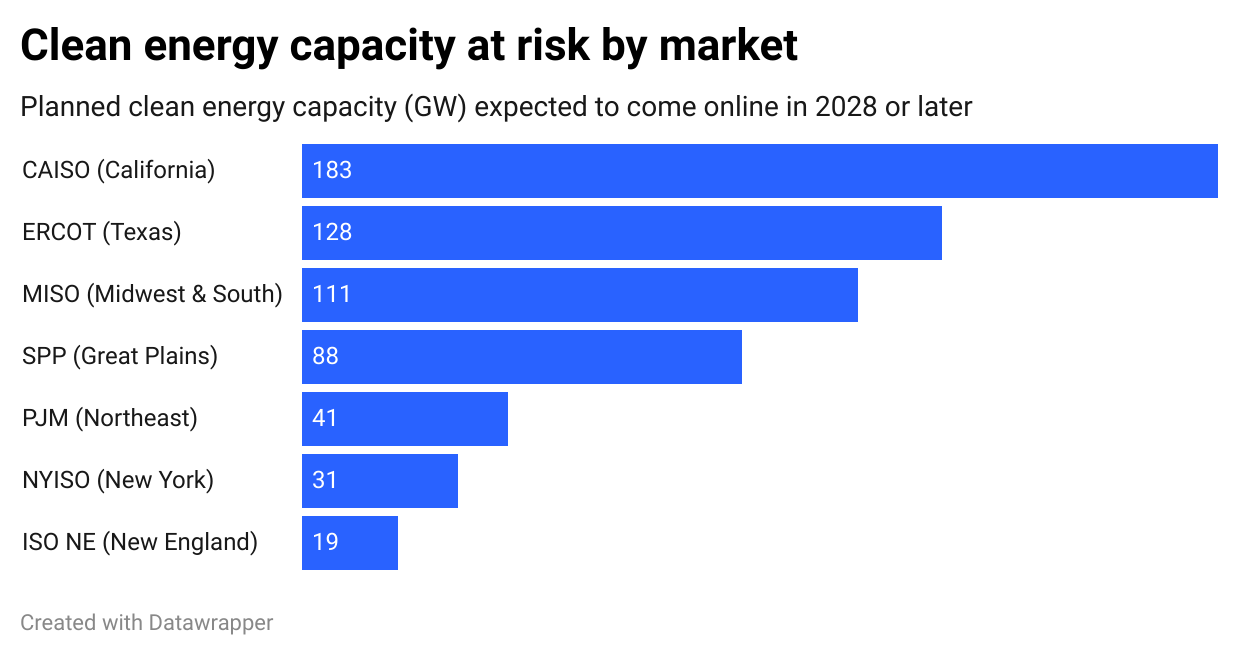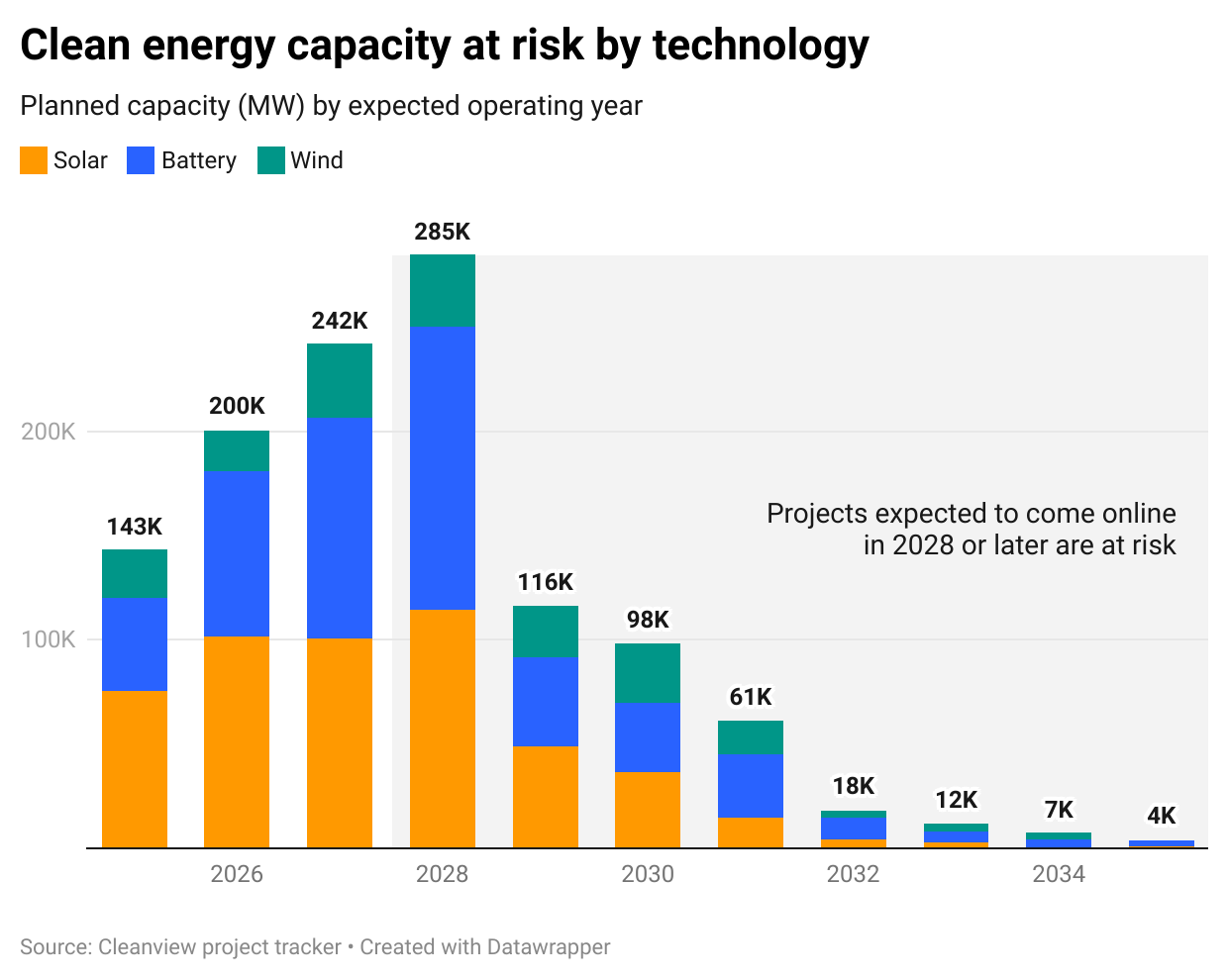Where Clean Energy Projects Are at Risk
An analysis of where clean energy projects are at risk of losing tax credits—and potentially their financial viability
Editors note: This newsletter is part of an ongoing series covering Congress’ effort to repeal the Inflation Reduction Act. For the next 30 days I’m planning to cover the bill with short visual stories communicating what’s at stake. You can read more about the series here.
If the US Senate succeeds at repealing the Inflation Reduction Act, there will be a wave of cancelled clean energy projects across the country. That much is certain. But how many projects would be cancelled, how much planned clean energy generation capacity would the country lose, and where would projects be at risk?
This morning, I published a report for Cleanview that aims to answer those questions.
The headline finding from the analysis is that more than 600 GW of clean energy capacity is at risk of cancellation. To put this in perspective, that's equivalent to building 600 large power plants, or roughly half of America's entire current electricity generation capacity.
The country can’t afford to lose this planned capacity. Electricity demand is rising faster than it has in decades due to data center growth, electrification, and extreme weather. Cutting off the country’s fastest growing sources of generation capacity would raise energy prices for American families and businesses. One recent analysis by Energy Innovation projects that wholesale electricity prices would rise by 50% by 2035 if the bill becomes law.
Losing this planned electricity generation capacity also threatens one of the Trump administration’s top goals: beating China in the race to develop artificial intelligence. Less generation capacity would make it difficult for new data centers to come online. The data centers that are able to connect would be forced to pay higher prices.
The passage of this bill and subsequent cancellation of clean energy projects would also threaten jobs across the country. The growth of solar, wind, and battery storage has created millions of jobs in the US. If projects are cancelled developers would be forced to lay off employees. They would also buy less equipment from clean energy manufacturing facilities, which could result in manufacturing layoffs.
Takeaways from our analysis
Using Cleanview’s project tracker, I analyzed thousands of planned projects across the country to see where projects are at risk of being cancelled. Here’s what I found:
More than 600 GW of clean energy projects scheduled for completion in 2028 or later could lose tax credit eligibility under the new law, threatening their financial viability.
Storage projects face the highest risk with 265 GW of capacity planned for 2028 and beyond, followed by solar at 223 GW and wind at 114 GW.
California has the most clean energy projects at risk, owing to its large clean energy pipeline and lengthy development timelines. Nearly 80% of all planned clean energy projects in California are at risk.
In Texas between 36 and 128 GW of clean energy capacity is at risk. But many active projects in the state are relatively safe given how quickly developers can build projects in the state.
Across the Northeast—in the PJM, NYISO, and ISO NE markets—91 GW of clean energy capacity is at risk.
You can read the full report by clicking the button below.




600 GW at risk is a WAKE UP call